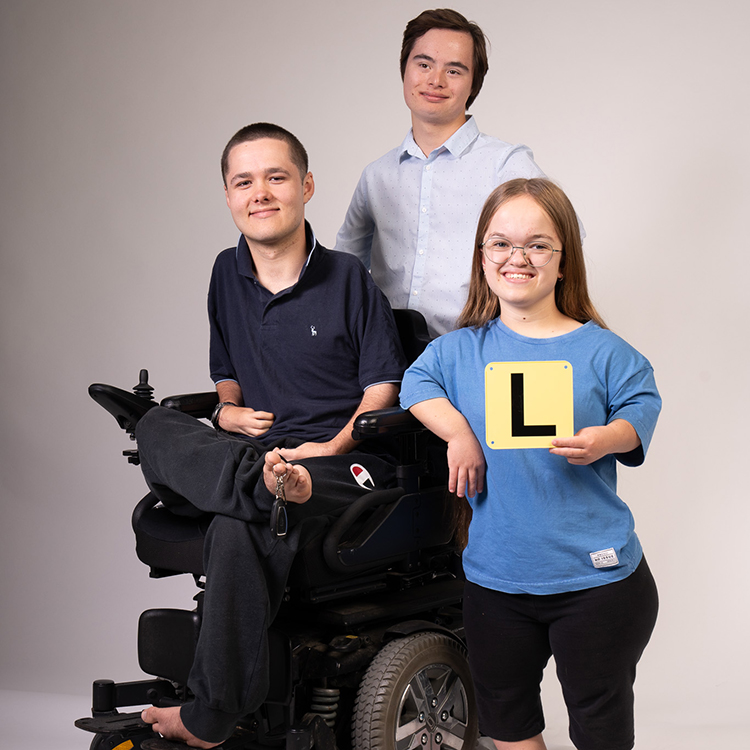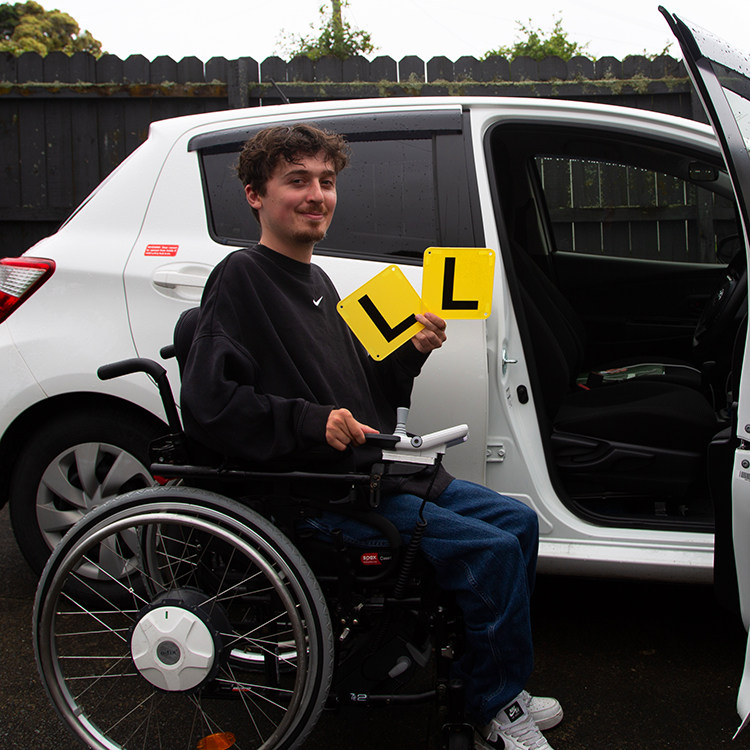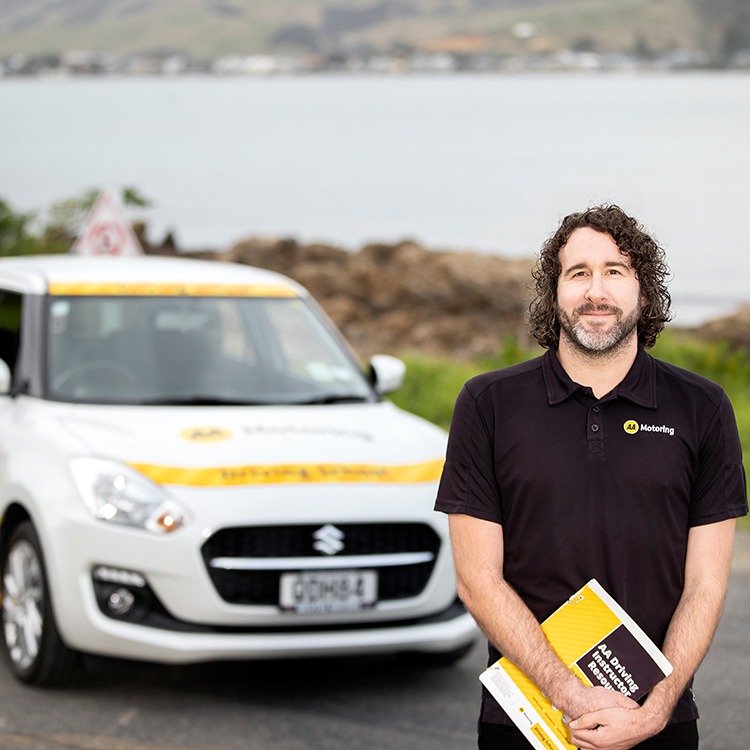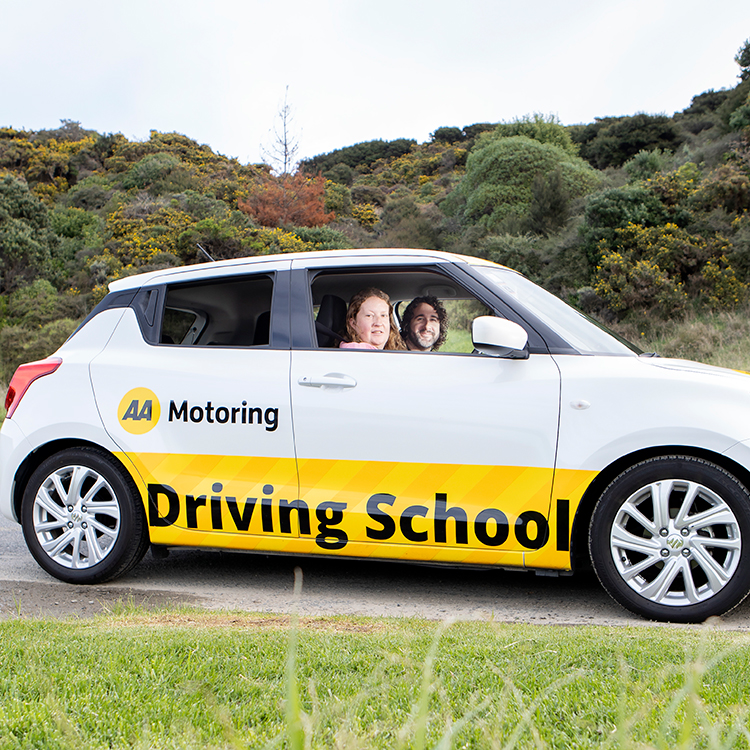
Does our driver licensing system need to change?
The Government is proposing some significant changes to New Zealand's Graduated Driver Licensing System. What does the AA think?

We go behind the scenes of a new documentary series about people with disabilities learning to drive.
The upcoming Sky NZ Originals series Licence to Drive, which premieres this July, features twelve New Zealanders with disabilities embarking on the journey to get their driver licences. The series highlights their diverse experiences and the profound sense of independence and belonging that comes with getting that small but significant card.
The six-part series is the brainchild of Sweet Productions producers Robyn Paterson and Jai Waite. The duo launched their disability-led platform in 2022 to create more representation within the stories they were telling.

“We are very aware of how vital it is to have ownership behind the lens when working with certain forms of diversity,” Robyn says. “Until recently, that hasn’t been the case with disability, and that’s where we wanted to shift the dial.”
The award-winning documentary filmmaker lives with the chronic health condition fibromyalgia which causes pain and fatigue.
“It has always been about the power to tell our own stories,” echoes Jai, who suffered a spinal cord injury from a diving accident in his 20s that resulted in quadriplegia.
“It’s easy for a company to include something on disability at a level that’s not upper management, so for us to be disability-led is super important. If it’s filtered through other layers then it can often morph into something that you didn’t want, or told in a way that you didn’t intend,” he says.

Jai and Robyn have used this authentic approach for Licence to Drive which portrays 12 Kiwis with physical and intellectual disabilities as they navigate the challenges and triumphs of obtaining a driver licence.
From lifechanging workplace accidents to congenital disabilities, the stories include a student learning to drive with his feet because he doesn’t have arm function and others with autism, dyspraxia and even polio.
“There are also all the different vehicle adaptations that use interesting technology to make it possible for people to drive with different functions,” Robyn says.
One innovation is ‘drive-by-wire’ technology from Germany, introduced by Christchurch company Abiliquip which enables people with significant limitations to operate a vehicle. The show follows a young driver who sustained a spinal cord injury from a car accident as a toddler trialling the equipment.

The series also explores the importance of vehicles being adapted to specific disabilities, an experience that resonates with Jai, who almost lost the will to drive because of the limited vehicle options available after his accident.
“I used to have to transfer from my wheelchair into the front seat, then take my chair apart and put it in the seat beside me. Luckily, the chairs got lighter over time but my first one weighed 20kg. Decades of doing that, and it got to the point where I just didn’t feel like going out anymore, it was all too much,” Jai says.
He now drives a van which allows him to dock straight into the driver’s seat via a ramp attached to the side of the vehicle, a “life changing” advancement.
While the driver licencing journey is different for everyone, one of the main themes of the show is how pivotal a licence is to gaining independence.
“It’s important for people to be able to live their lives in a way that feels full for them,” Robyn says. “We’ve really seen the transformation it can make in people’s lives.”
Robyn and Jai agree it’s also vital that society supports a disabled person’s ability to drive, how and where they want to, because of the many barriers they’re up against, including funding, the cost of additional driving lessons and access to specialised driving instructors.

AA Driving School has a network of 100 instructors with diverse expertise, including teaching people with disabilities. Although most of the AA Driving School cars are not fitted with vehicle modifications beyond dual pedal systems, instructors can teach in a drivers’ personal vehicle if it’s fitted specifically to their needs, and interpreters can be accommodated for deaf or hearing-impaired drivers.
Wellington instructor Caleb Dillner teaches up to 30 students a week, and for the last decade has worked with people with intellectual disabilities.
One of his students is 22 year-old Margaret Anderson Kane who spent close to 100 hours behind the wheel with Caleb on the journey to obtain her restricted licence. She had been finding the overall experience of learning to drive a challenge – until she met Caleb.

“With my disability I struggle to comprehend information, and visual demonstrations allowed me to learn in a way that is best for my brain,” she says.
“Prior to learning with Caleb I tried two instructors that didn’t work for me. It was Caleb’s knowledge and understanding of how everyone learns in different ways that encouraged my driving journey.”
ADHD, autism, epilepsy, cerebral palsy and muscular dystrophy are among the disabilities that Caleb supports. His approach to teaching is about taking it slow, using set routines and simple language, pausing between sentences and giving plenty of notice for instructions.
“When working with students who have cognitive delays, I often use set routes. This supports their learning by allowing more time to process information, develop basic safety habits and build muscle memory.
“Many of these learners thrive with routine, so I aim to create a structured learning environment while introducing gradual challenges to ensure continued progress.”
Caleb says working alongside a student’s parent or caregiver is key, providing them with a better understanding of how to support practice at home and even pick up a few helpful tips themselves.

AA Driving School Head of Driver Training, Kirsty Vincent takes pride in the AA’s many instructors who have experience or are currently training people with all types of disabilities.
“Getting a driver licence offers new freedom. If the person is willing to learn how to drive safely and confidently, then we want to give them the option to seek professional training,” she says.
“Whether they have a disability or not, every student learns differently and at different paces, and our instructors are trained in adapting their teaching styles to suit.”
Kirsty also assures students they don’t need to rush their training and that there’s no limit to the number of lessons a driver can have.
“In fact, we encourage anyone who has had their licence for ten or more years to get a refresher session every now and then.”
This story is from the Winter 2025 issue of AA Directions magazine.